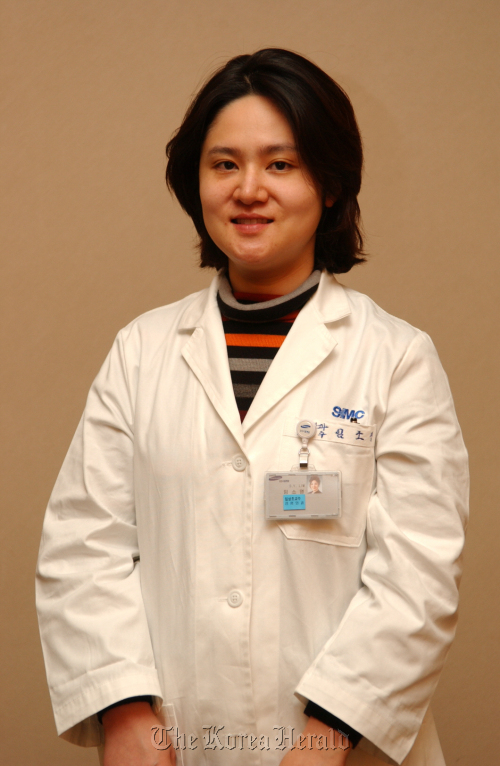
A young mother who seems to be around 30 years old visited my clinic with her six-month-old baby girl. Her chief complaint was that the head shape of her baby was slightly distorted.
“She had right flattened occiput and frontal bossing on the same side, probably due to her sleep habit,” she said with a worried expression.
“I found on the Internet that it may require major surgery. Does she need to have surgery? And is there any possibility that her face can be distorted if we do not correct her head shape at this young age?”
Although in the past an asymmetric head shape was not a major medical issue, it has drawn more and more medical interest over the past two decades.
The head shape can be determined by the form of a skull.
The skull is the most rapidly growing part in our body. The skull bone consists of several bones, which connect each other with cranial suture. In the first year of life the sutures serve as the most important growth centers in the skull.
The infant’s skull consists of the Metopic suture, Coronal suture, Sagittal suture and Lambdoid suture.
The problems in these sutures can lead to pathologic plagiocephaly brachycephaly and so on. As in the case of the baby who visited with the main complaint of a deformed head shape, however, the most patients had positional plagiocephaly.
In the West, with the Back to Sleep campaign, a rapid increase in the incidence of deformational plagiocephaly was reported.
Q1. How can we distinguish between positional plagiocephaly and pathologic plagiocephaly?
In diagnosing the child having deformational head shape, brain CT can be most helpful. As the cranial sutures play an important role in cranial bony growth, if the cranium, brain and sutures are demonstrated to have normal development, the deformed head shape can be diagnosed as positional plagiocephaly by external force on the cranium.
However, if one of the suture lines is identified to be obliterated early, the craniosynostosis which results in pathologic plagiocephaly etc., can be doubtful, which is relatively rare congenital anomaly.
Q2. What is the cause of positional plagiocephaly?
Postnatal positioning is not the only reason for the development of positional plagiocephaly. It is a multifactorial disorder.
Preterm infants are more likely to develop a positional plagiocephaly, and male gender, intrauterine forces, multiple birth, traumatic delivery, and limitation in head movement because of torticollis or eyelid ptosis also can be risk factors.
The correction of underlying disease can be one of the most important treatments and if necessary, cranial orthosis, namely helmet therapy also can be used.
Q3. How long does the baby have to wear a helmet?
It is more effective when the baby wears a helmet during the period in which his head starts to grow rapidly.
It is possible to wear it five months after birth, and it has to be worn before 18 months at least. The baby’s head grows most rapidly until 12 months and then less until 24 months. It grows slightly until 36 months, and after that, the Helmet has no benefit since the growth rate becomes very slow.
Although the age is very important, since there are slight differences among the babies, it is better to start when the baby’s head is small, or the anterior fontanelle is still widely open.
Q4. Does wearing a helmet cause any side effects?
When the head gets bigger than the helmet, the pressed part of the scalp could be red and erythematous. If the redness does not disappear 30 minutes after helmet has been removed, there are possibilities of skin ulcer, temporary hair loss, or even permanent hair loss. So it is recommended to visit the clinic and keep an eye on the redness.
Dermatitis, pruritus could occur according to the baby’s skin condition. In such cases, it is necessary to talk to the doctor.
During midsummer, it is important to keep the baby’s head cool since the baby sweats a lot and wearing a helmet becomes most frustrating. If the duration of wearing a helmet gets shorter and the treatment process gets skipped for the above problems, the curative effect could be slow and the treatment may end with an under-corrected state.
Q5. What is the craniosynostosis and what are its treatments?
Craniostosis is a cogenital malformation which is caused by the complete conglutination of one or more sutures that are in calvaria and skull base, in a few months or a year after the birth.
It could even repress brain growth, or cause facial malformation. In certain cases, since the volume of the head decreases, some functional defects may occur such as an increased intracranial pressure, brain hypoplasia, hydroencephalus, mental retardation, or visual disturbance caused by pressure on optic nerve.
Craniosynostosis could be treated through surgical treatment. It is recommended to get the treatment no later than one year after the birth, at least two years, since the brain of the infant grows most rapidly through the first year and the baby’s psycosocial impairment could be reduced through early treatment.
Specific methods of operation depend on the type and number of obliterated sutures. There are various kinds of operations such as frontal advancement osteotomy, strip craniectomy, and distraction osteogenesis.

By Lim So-young
The author is an assistant professor at Department of Plastic Surgery of Samsung Medical Center. ― Ed.


















![[Today’s K-pop] Treasure to publish magazine for debut anniversary](http://res.heraldm.com/phpwas/restmb_idxmake.php?idx=642&simg=/content/image/2024/07/26/20240726050551_0.jpg&u=)